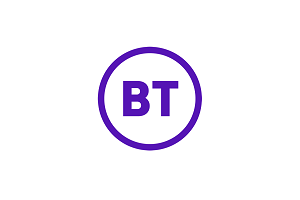BT and Nokia have announced uplink aggregation of two carrier components in a 5G standalone (SA) live network spectrum. Demand for faster uplink speeds is growing in importance for a number of both existing and emerging use-cases, including live-streaming and video calls. Carrier aggregation is an important technique for ensuring high performance as demand and data usage continue to increase. Further benefits include maximisation of spectrum assets and energy efficiency.
5G carrier aggregation over a 5G SA network, which combines several transmission bands into one connection, is a key capability to deliver the high-performance 5G service that customers expect. Every new carrier added allows for higher capacity and speed directly to customer devices.
Last year, BT and Nokia announced 5G SA 4CC CA downlink. Now, by achieving both 5G SA 2CC CA uplink and 4CC CA downlink simultaneously, BT can deliver uplift in connections performance from the device to the network by increasing throughput and capacity, as well as unlocking scope to push uplink performance further in the future.
The tests were conducted at BT Group’s facility in Adastral Park, UK, using Nokia’s 5G AirScale portfolio and a device powered by a Snapdragon 5G Modem-RF System from Qualcomm Technologies, Inc., following initial lab-based trials. Speeds of over 230 Mbps in the uplink were reached including 5G FDD carrier at 40 MHz in 2600 MHz as well as over 1 Gbps in the downlink. The demonstration was conducted with 15, 30 and 40 MHz NR2600 carrier independently aggregated with a 40 MHz NR3500 carrier component.
The work is part of BT Group’s efforts to ensure that, when 5G SA services are launched over EE, it maintains its unbeatable 5G network for customers.
“Carrier aggregation will be key to delivering the very best 5G experience to our customers, with this latest trial in partnership with Nokia demonstrating significant performance increases in terms of uplink speeds. This builds on last year’s success of achieving 4CA in 5G SA downlink, and we look forward to achieving further milestones in this space as we continue to progress towards 5G SA.” says Greg McCall, chief networks officer, BT Group.
“This successful trial with our long-standing partner BT, is another great example of Nokia’s unrivalled leadership in 5G carrier aggregation technology. Multi-component carrier aggregation helps mobile operators to maximise their radio network assets and provide the high 5G data rates to subscribers in more locations.” says Mark Atkinson, senior vice president, radio access networks PLM (product lifecycle management) at Nokia.
“We are proud of our continued collaboration with BT to bring our latest 5G technologies to consumers. 2CC uplink carrier aggregation is expected to improve uplink speeds by up to 2X, to give a better user experience overall. Consumers would potentially be able to upload and share higher quality videos faster online, such as when attending concerts and when watching and streaming games online. We look forward to the future and what else is to come with our continued collaboration with BT.” says Enrico Salvatori, senior vice president and president, Qualcomm Europe/MEA, Qualcomm Europe Inc.
Comment on this article below or via Twitter: @VanillaPlus OR @jcvplus






